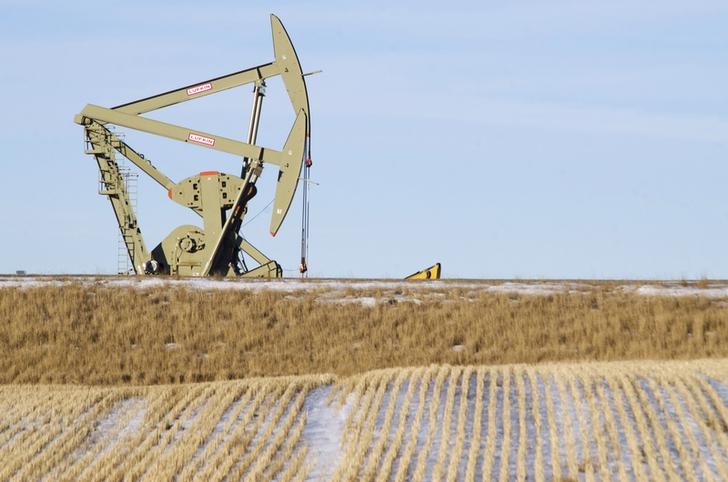(Bloomberg) -- Oil climbed after more sanctions were unleashed to isolate Russia, while the U.S. and its allies consider releasing about 60 million barrels of crude from emergency stockpiles to quell supply fears.
West Texas Intermediate futures in New York closed up above $95 a barrel on Monday. Prices soared earlier in the session in response to a fresh raft of sanctions aimed at choking off some Russian banks from global finance as the fighting continues in Ukraine. Oil then paired some of its gains on news that the U.S. and other nations are considering tapping into strategic crude reserves.
“There are too many giant risks in oil’s room, which also include nuclear risks, and the likelihood that crude prices will skyrocket again seems likely,” said Ed Moya, senior market analyst at Oanda. “Energy traders are quickly realizing that any dips that emerge on any Ukraine crisis de-escalation headlines or SPR talk won’t keep this market from being very tight.”
Over the weekend, the U.S. and its allies excluded some Russian lenders from the SWIFT bank messaging system, potentially throwing energy trade into turmoil. The Russian central bank’s foreign reserves were also targeted. In a signal about how far governments are willing to go to pressure the Kremlin, BP (NYSE:BP) Plc moved to unload its holding in oil giant Rosneft PJSC by taking a financial hit of as much as $25 billion.
“This is an enormous amount of oil that has the potential to be disrupted,” Jeff Currie, head of commodities research at Goldman Sachs Group Inc (NYSE:GS). said in a Bloomberg Television interview.
Russia’s invasion of Ukraine has roiled markets from energy to metals and grains, heaping more inflationary pressure on a global economy already grappling with soaring costs. At least two of China’s largest state-owned banks are restricting financing for purchases of Russian commodities, as are Societe Generale (OTC:SCGLY) SA and Credit Suisse (SIX:CSGN) Group AG.
While sanctions haven’t targeted any of Russia’s energy supplies, some customers have paused purchases of the country’s flagship Urals grade, while Asian buyers are trying to secure more Middle Eastern crude.
Against this volatile and fast-moving backdrop, OPEC+ faces a trickier task than usual when it meets on Wednesday to discuss supply policy for April. Despite the invasion, the cartel will probably stick to its plan of gradually increasing oil production, according to delegates. The group will also have to take into account the halt of some Iraqi output.
Demand destruction is the only thing that can stop oil shooting higher after additional curbs were unleashed on Russia, according to Goldman. The bank raised its one-month forecast for Brent to $115 a barrel from $95, with significant chance of pushing higher if there’s further escalation of tensions or longer disruption.
Russia pumped 11.3 million barrels of oil a day in January, according to data from the International Energy Agency. The IEA pledged last week to help ensure global energy security, while India said it would support initiatives to release emergency oil reserves to help calm prices.
(Updates with closing oil prices.)
©2022 Bloomberg L.P.

